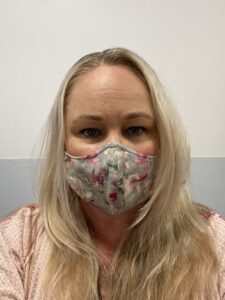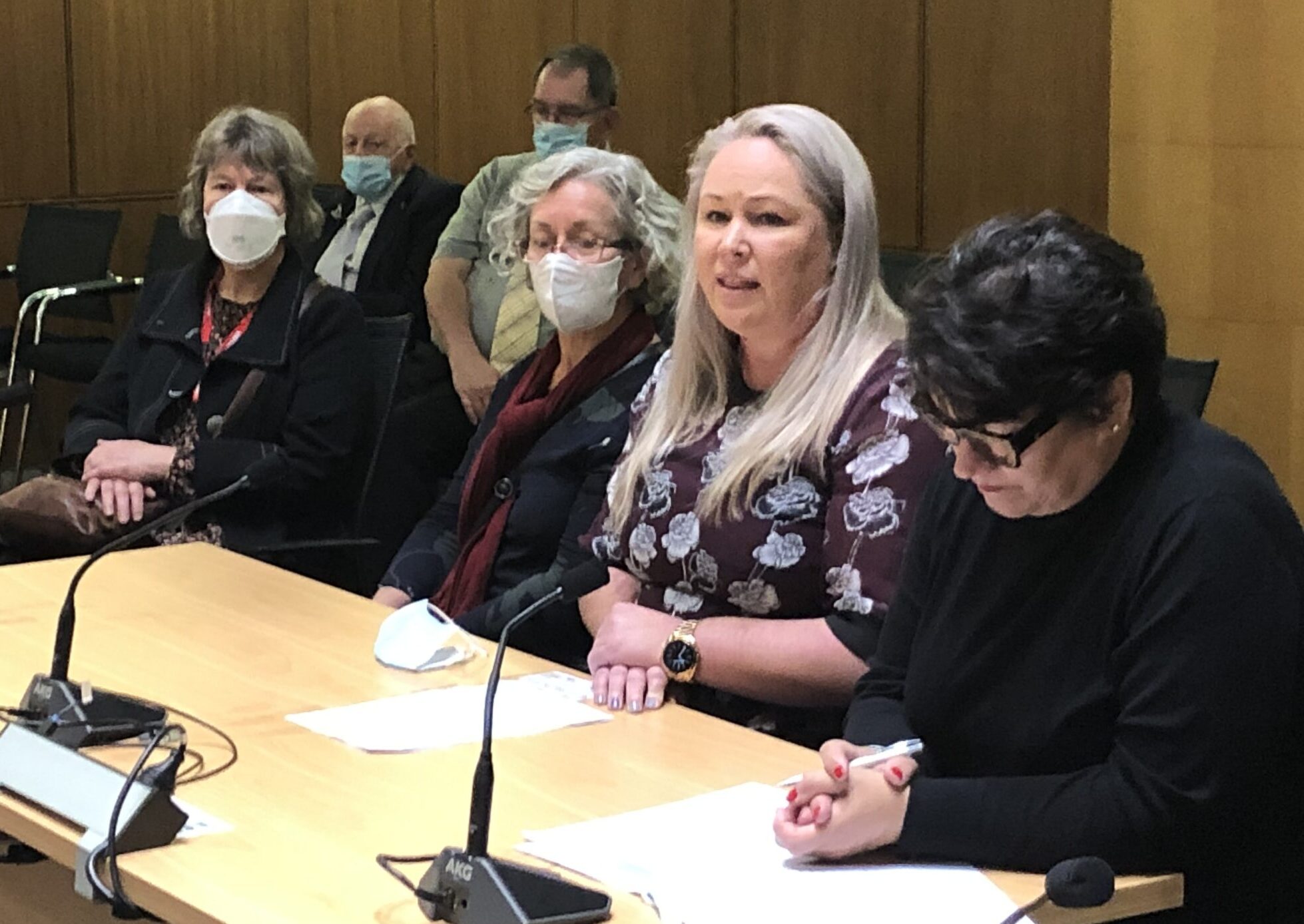Those of us working in aged care have become all too familiar with having older people with acute needs admitted urgently in states of heightened anxiety and distress. Often they pass away within a short time.

In the facility I manage, over the past month the average stay has been less than three months. This compares to five years ago, when the average stay for residents was 18 months to two years. During 2020, we admitted 168 people and discharged 181 — discharges that were mostly due to residents dying.
By day, I carry out my work as hospital service manager, and then carry on for another eight hours as a clinical nurse on the floor. Recently I worked a 93.5-hour week.
Recently, I had a woman urgently admitted from her home due to carer stress. She required intensive nursing support but passed away just after being admitted, without her family present.
Aged care ‘fastest-growing’ sector
Aged care is one of our largest and fastest-growing sectors, which provides care to one of our most vulnerable populations, often in Aotearoa’s most rural and remote locations.
The voluntary standards (see pp56, 58 and 70-71) for our aged-care facilities state each resident only needs half an hour of nursing care per day — but with residents in recent years coming in older, sicker and in need of more acute care, this is nowhere near enough.
Many have complex needs, requiring a highly skilled nursing workforce to support them to enjoy the best quality of life possible in their remaining time. The clinical nursing teams are at the frontline of providing care and support to these residents, as well as their families/whānau and significant loved ones.
Nursing those approaching the end of their lives also requires particularly caring, compassionate and skilled staff. These nurses must also be able to manage pain and physical symptoms, provide holistic, timely and responsive care, and have teamwork skills — all while preparing the resident and their families/whānau for the approaching end of life.
The level of care provided in many aged residential care (ARC) facilities includes:
- Hospital-level
- Accident Compensation Corporation (ACC) transitional/rehabilitative/serious injury
- End-of-life
- Assisted dying
- Mental health and addiction
- Cognitive impairment requiring a secure environment
We nurses who work in aged care and the community must also support our older people to stay independent as long as possible, whether in their own home or in a care home, for their own wellbeing but also to reduce pressure on hospitals and ARC facilities.
Juggling multiple, acute conditions
In my facility, in an average day, four nurses are expected to manage about 75 residents, many with highly complex issues.
Recently in my facility, two registered and two enrolled nurses across the day were managing three residents with peritoneal dialysis; one receiving hemodialysis; one with a tracheostomy; two with percutaneous endoscopic gastrostomy (PEG) feeds; one with a pleural effusion; four with syringe-drivers; nine who were actively dying and three with drug and alcohol dependency issues. All had complex emotional and psychological needs and physical demands such as being bed or chair-bound, or dysphagia, along with the various social dynamics of their families.
Not only did my team get him positively engaged, they provided him with much-needed emotional comfort while also supporting him approach the end of his life.
The ageing population of Aotearoa New Zealand is rapidly growing. Caring for older people with multiple comorbidities is placing an increasing burden on the health-care system. The complexity and acuity of care needs faced by aged care nurses has increased significantly in recent years.
Short-staffed care homes close off 900 beds
Yet current funded staffing allocations are not always sufficient for the acuity of the resident or what is occurring in the care home at the time. While there have been enough beds to meet demand, there has been a shortfall in the workforce — most significantly in clinical staff, and mostly nurses. This has resulted in nearly 900 aged care beds being closed off nationwide so far this year due to a lack of staff. This has put pressure on communities, families/whānau and other parts of the health-care sector.
One measure of the nursing shortfall is the number of section 31 notices filed to HealthCERT — the Ministry of Health’s certifier responsible for ensuring hospitals and residential aged and disability care facilities provide safe care, as required by the 2001 Health & Disability Services (Safety) Act.
These notices are based on roster gaps, due to unfilled vacancies or sickness (including COVID-19 which has hit the sector hard), and when acuity of care exceeds available capacity on that shift.
In 2020, there were approximately 200-300 notices submitted to the Ministry of Health (MoH). In 2021, that tripled to 841 and in the first five months of 2022 has already exceeded 800. This highlights a significant and systemic problem with aged-care staffing.
The result, for the nursing workforce, is high sick leave, loss of nurses from the profession and a stressful and unpleasant work environment because everyone is exhausted.
Anecdotally, for us in the sector, we know there have been more complaints to the Health & Disability Commisioner relating to provision of care, sentinel (life-threatening) events and other issues. This rise is likely attributable to staffing problems, although there is no analystical data yet to support that.
Aged care has faced a number of challenges over recent years — and more so since the pandemic began in 2020. Our nurses are working 12 to 16-hour shifts, trying their best to provide care for vulnerable residents. Not only does this often breach their employment contracts, it puts them at risk of burnout.
Our clinical managers and facility managers — myself included — are working extended hours, even sleeping over at times and working night shifts to provide clinical support and cover while level 4 caregivers (qualified to administer medication) are providing the physical care.
Our nurses are struggling to meet their competency requirements, as stipulated by the Nursing Council, as it is impossible to release them for professional development.

Lengthy shifts lead to burnout
I myself am very familiar with this. By day, I carry out my work as hospital service manager, and then carry on for another eight hours as a clinical nurse on the floor. Recently I worked a 93.5-hour week. At the same time, I’m also trying to manage my family life and support my own ageing parents — and somehow trying to find time to care for myself. I recently pulled out of postgraduate nursing studies due to the pressure of work.
The result, for the nursing workforce, is high sick leave, loss of nurses from the profession and a stressful and unpleasant work environment because everyone is exhausted.
Yet aged-care nurses work with high levels of autonomy, amid high expectations from families, while being paid significantly less than their peers in hospitals and district health boards/Health NZ. There can be as much as a $20,000 difference in annual salary.
While the acuity of residents in a care home can be akin to that in an acute medical ward, there is not the same access to medical support — aged-care nurses must make clinical decisions and be fully accountable for them.
We hope . . . we can all stand together, instead of in our silos, and recognise we are all burning ourselves out to give quality care for our residents and patients.
Residents are not just frail and old, they are often significantly unwell and may also be under 65 but with acute health needs.
Some, coming into a care home for the first time, are faced with complex medical treatment and a need to adapt socially, often in a short time before their deaths.
For example, one man under 65 was recently admitted with end-stage lung cancer, no social or family support and a long history of trauma, mental health issues and a distrust of health professionals. Not only did my team get him positively engaged, they provided him with much-needed emotional comfort while also supporting him as he approached the end of his life.
Facilities charging ‘premium’ fees
To counter the inadequate government funding, some providers are charging premium room charges which can vary from $10 to $150 per day. With the rising cost of living, many families cannot afford this, yet push themselves into debt, desperate to ensure that their loved one is given safe and high-quality care.
We need our health and political leaders to support our clinical nursing teams to work collaboratively and ensure all New Zealanders have access to high-quality care that meets their particular needs. Ensuring our clinical workforce is adequately prepared and skillful through progressive education and training is important to building a responsive, sustainable workforce which feels recognised and valued.

We would like to see an acuity tool which determines minimum safe-staffing levels across the sector, with a local, Aotearoa-focused lens, which reflects our diverse communities around the country. We want to see this as soon as possible.
Until then, we call for enough funding to increase our current staffing so that the situation does not get any worse.
The New Zealand Aged Care Association has estimated $94 million is needed to pay ARC nurses (enrolled and registered) on a par with hospital nurses — but this would rise to $166 million after the Health NZ/NZNO pay equity settlement rates are implemented.
The association puts total underfunding of the sector in the range of $400 million.
However, our challenges are wider than pay parity. We hope they will resonate with our nursing colleagues in hospitals and other areas, and we can all stand together, instead of in our silos, and recognise we are all burning ourselves out to give quality care for our residents and patients.
This viewpoint is based on NZNO’s submission to Parliament’s Health Select Committee last month in support of E tū union’s safe staffing petition for minimum staffing levels in aged care. Presented by Seymour, the submission was compiled with the help of NZNO professional nursing advisors Marg Bigsby and Michelle McGrath, and industrial advisor aged care Lesley Harry.



